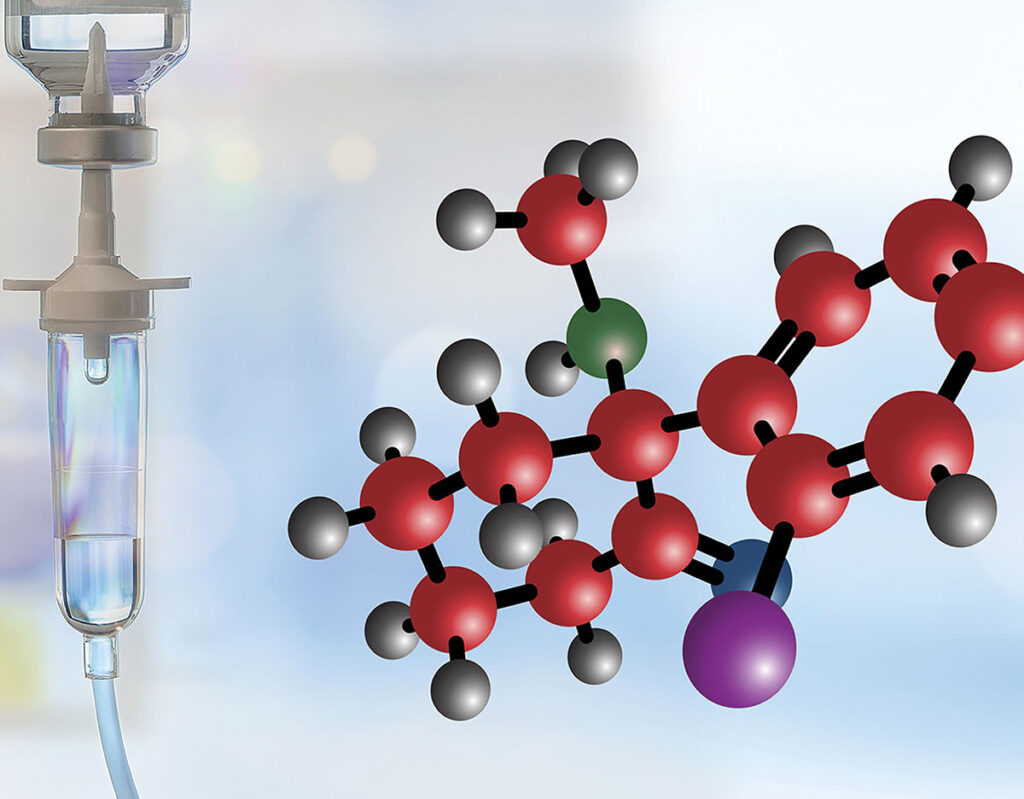Ketamine synthesis has emerged as a revolutionary approach to enhancing well-being and fitness. With its origins dating back to the 1960s, ketamine has been widely recognized for its anesthetic properties. However, recent advancements in science and medicine have shed light on the potential benefits of ketamine beyond its traditional applications.
In this article, we will delve into the history of ketamine synthesis, understanding its benefits for health and fitness, the science behind its synthesis, and the safety precautions and regulations associated with it.
The History of Ketamine Synthesis
The synthesis of ketamine can be traced back to the work of Dr. Calvin Stevens in the 1960s. Dr. Stevens, a scientist at Parke-Davis, discovered the unique properties of ketamine while searching for a new anesthetic. Initially known as CI-581, ketamine soon gained popularity as an anesthetic due to its rapid onset and short duration of action. Over the years, the synthesis process has undergone refinement and improvements, leading to the development of more efficient and cost-effective methods.
Understanding the Benefits of Ketamine for Health and Fitness
Ketamine has garnered attention for its potential benefits in promoting both mental and physical well-being. In the realm of mental health, ketamine has shown promise in the treatment of depression, anxiety, and post-traumatic stress disorder (PTSD). Studies have demonstrated that ketamine can rapidly alleviate symptoms of these conditions, offering hope to individuals who have not responded to traditional treatments.
In terms of physical fitness, ketamine has been explored for its ability to enhance performance and aid in recovery. Some athletes have reported improved endurance, reduced fatigue, and increased muscle strength after ketamine administration. Additionally, ketamine’s anti-inflammatory properties have been studied for their potential in reducing muscle soreness and promoting faster recovery following intense physical activity.
The Science Behind Ketamine Synthesis

Ketamine synthesis involves a complex chemical process that requires expertise and precision. The primary method of synthesis involves the reaction between cyclohexanone and methylamine, resulting in the formation of ketamine hydrochloride. This process requires the use of specialized equipment and adherence to strict safety protocols to ensure the purity and quality of the final product.
Researchers are constantly exploring alternative methods of ketamine synthesis to make the process more efficient and sustainable. Some of these methods include the use of greener solvents, catalysts, and renewable resources. These advancements aim to minimize the environmental impact while maintaining the efficacy and safety of ketamine synthesis.
Safety Precautions and Regulations for Ketamine Synthesis
Due to the potential for misuse and abuse, ketamine synthesis is tightly regulated. In many countries, ketamine is classified as a controlled substance, requiring a license or authorization for its production. Strict regulations are in place to prevent the diversion of ketamine for non-medical purposes and to ensure its safe and responsible use in healthcare settings.
It is crucial for individuals involved in ketamine synthesis to adhere to safety precautions to minimize the risk of accidents and exposure to harmful substances. Proper ventilation, personal protective equipment, and appropriate waste disposal practices are essential to maintain a safe working environment. Additionally, regular quality control measures should be implemented to ensure the purity and potency of synthesized ketamine.
Exploring Alternative Methods of Ketamine Synthesis
As the demand for ketamine continues to grow, researchers are exploring alternative methods of synthesis to meet the increasing needs sustainably. One promising avenue is the use of biotechnology and fermentation processes to produce ketamine. This approach involves the use of genetically modified microorganisms that can efficiently convert simple substrates into ketamine. By harnessing the power of nature, this method holds the potential to reduce reliance on traditional chemical synthesis and lower the ecological footprint of ketamine production.
Ketamine Synthesis for Mental Health and Well-being

The application of ketamine synthesis in mental health has gained significant attention in recent years. Ketamine has shown remarkable antidepressant effects, with some studies reporting rapid and substantial improvement in individuals with treatment-resistant depression. The exact mechanisms by which ketamine exerts its antidepressant effects are still being studied, but it is believed to involve modulation of certain neurotransmitters in the brain.
Ketamine synthesis has also demonstrated potential in the treatment of anxiety disorders and PTSD. The fast-acting nature of ketamine allows for immediate relief of symptoms, making it a valuable tool in emergency situations or acute episodes of distress. However, it is important to note that ketamine should only be administered under the supervision of qualified healthcare professionals to ensure safe and appropriate use.
Ketamine Synthesis for Physical Fitness and Performance Enhancement
In the realm of physical fitness, ketamine synthesis has shown promise in enhancing performance and aiding in recovery. Some athletes and fitness enthusiasts have reported improved endurance, reduced fatigue, and increased muscle strength after ketamine administration. These effects are believed to be attributed to ketamine’s ability to block certain receptors in the brain, resulting in altered pain perception and reduced perceived exertion during exercise.
Furthermore, ketamine’s anti-inflammatory properties have been investigated for their potential in reducing muscle soreness and promoting faster recovery. By modulating the immune response and reducing inflammation, ketamine may help athletes bounce back quicker from intense training sessions or injuries, allowing for more consistent and effective training.
Risks and Potential Side Effects of Ketamine Synthesis

While ketamine synthesis offers exciting possibilities for enhancing well-being and fitness, it is essential to acknowledge the potential risks and side effects associated with its use. Ketamine can cause a range of side effects, including nausea, dizziness, confusion, and hallucinations. Prolonged and excessive use of ketamine can lead to more severe complications, such as bladder and kidney problems.
Moreover, ketamine has the potential for misuse and addiction. Individuals who use ketamine recreationally may be at risk of developing dependence and experiencing negative psychological effects. It is crucial for individuals considering ketamine use, whether for medical or non-medical purposes, to be aware of these risks and to seek guidance from qualified healthcare professionals.
Conclusion: The Future of Ketamine Synthesis in Health and Fitness
Ketamine synthesis has opened doors to new possibilities in promoting well-being and enhancing physical fitness. Its potential benefits in mental health and physical performance make it an intriguing area of research and application. However, it is important to proceed with caution and adhere to safety regulations to ensure the responsible use of ketamine.
As the field of ketamine synthesis continues to evolve, it is likely that we will see further advancements in the methods, safety protocols, and regulations surrounding its production. Continued research will provide a deeper understanding of ketamine’s mechanisms of action and its potential applications in various aspects of health and fitness.
In conclusion, while ketamine synthesis offers exciting prospects, it is essential to approach its use with careful consideration of the potential risks and benefits. As with any medical intervention, consultation with qualified professionals is crucial to ensure safe and responsible use. By harnessing the power of ketamine synthesis, we may unlock new avenues for enhancing well-being and pushing the boundaries of physical fitness.

